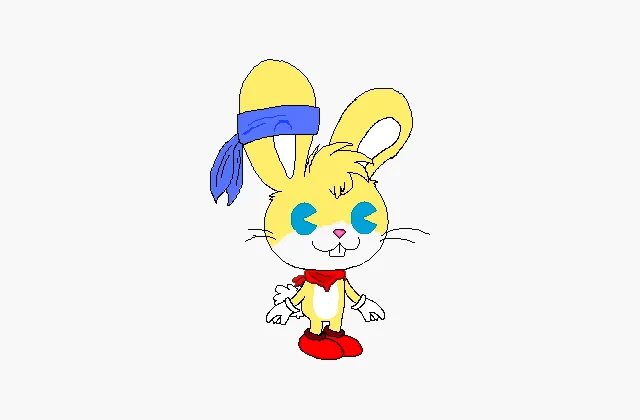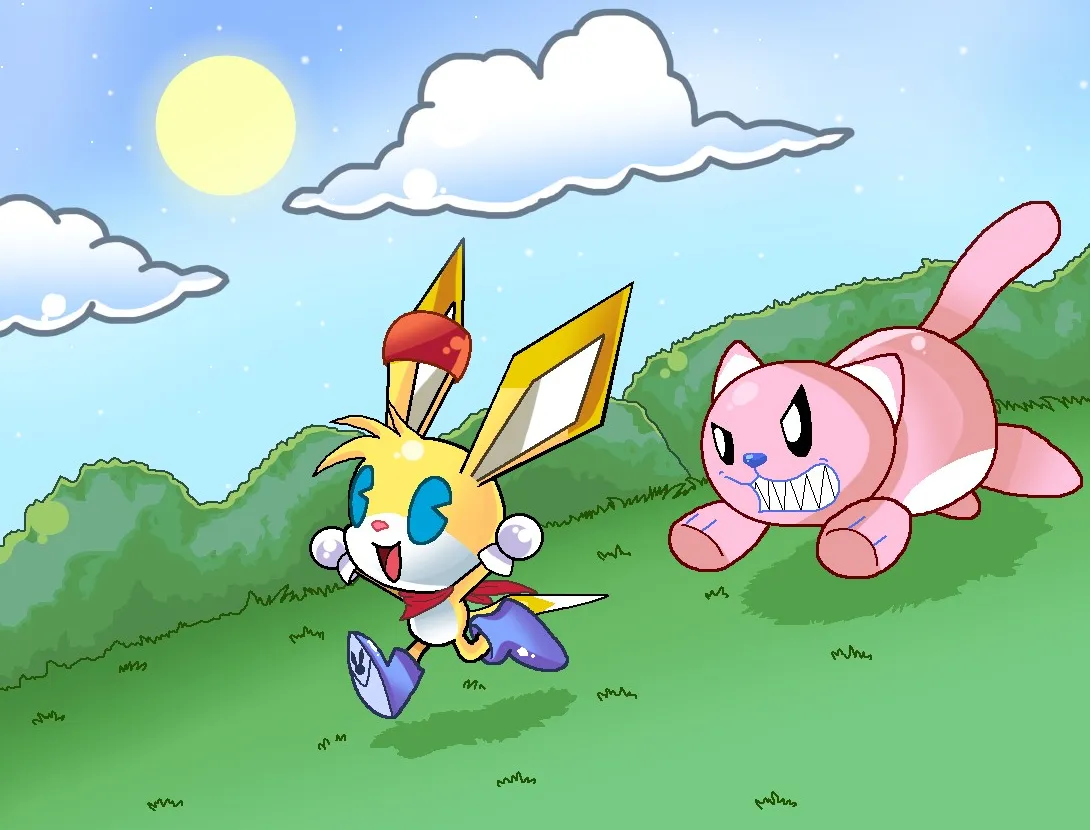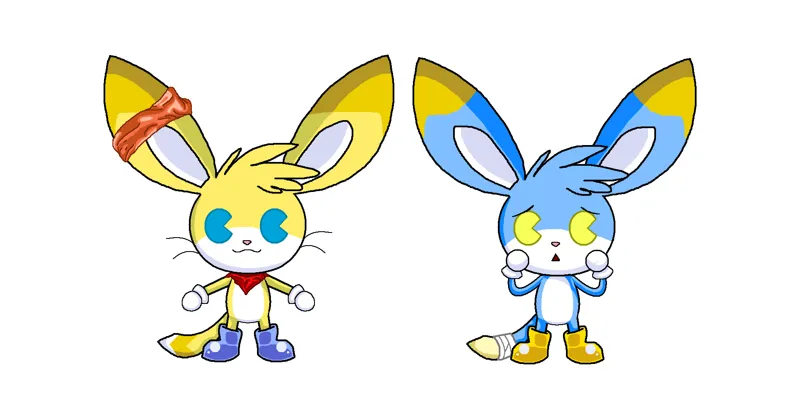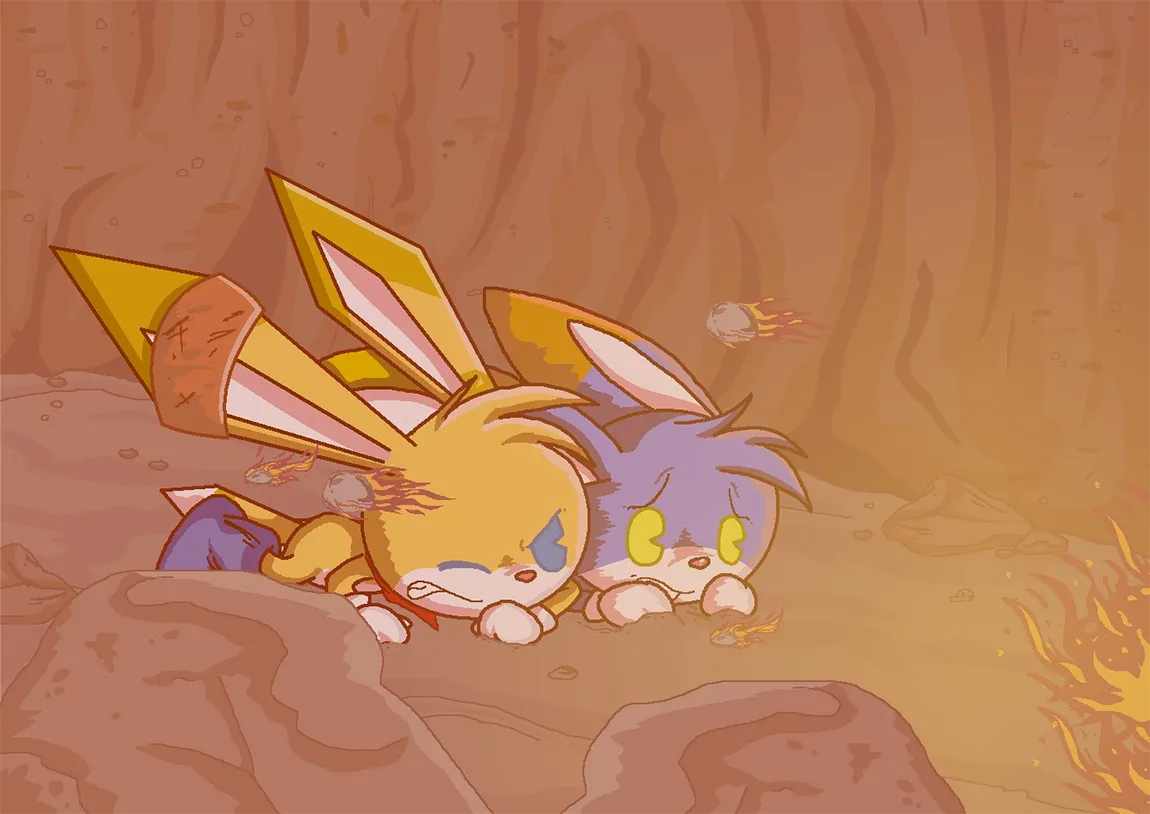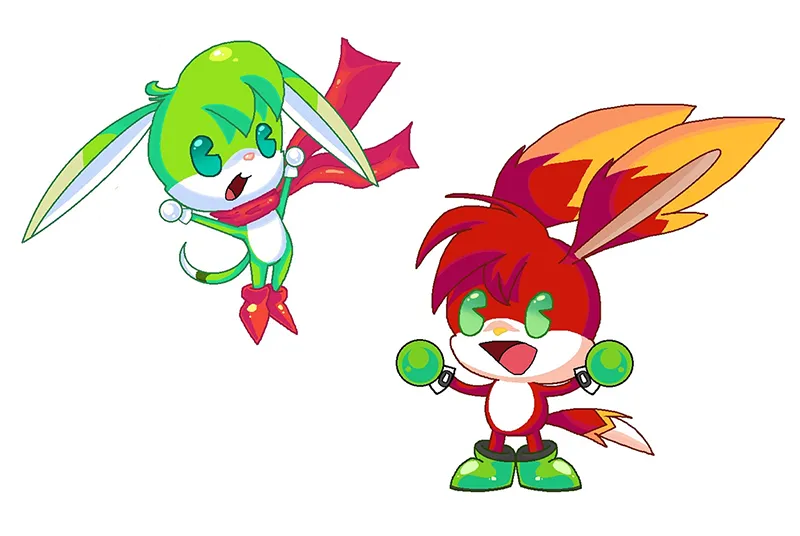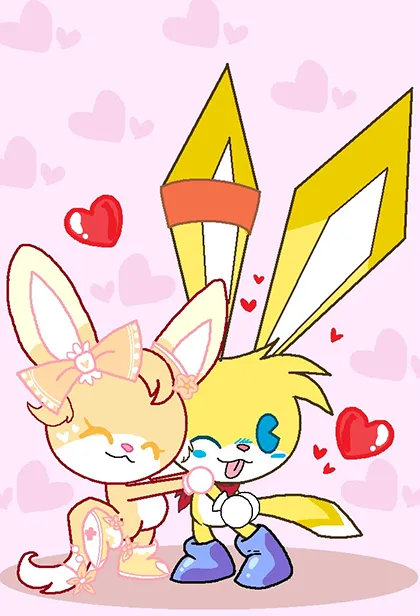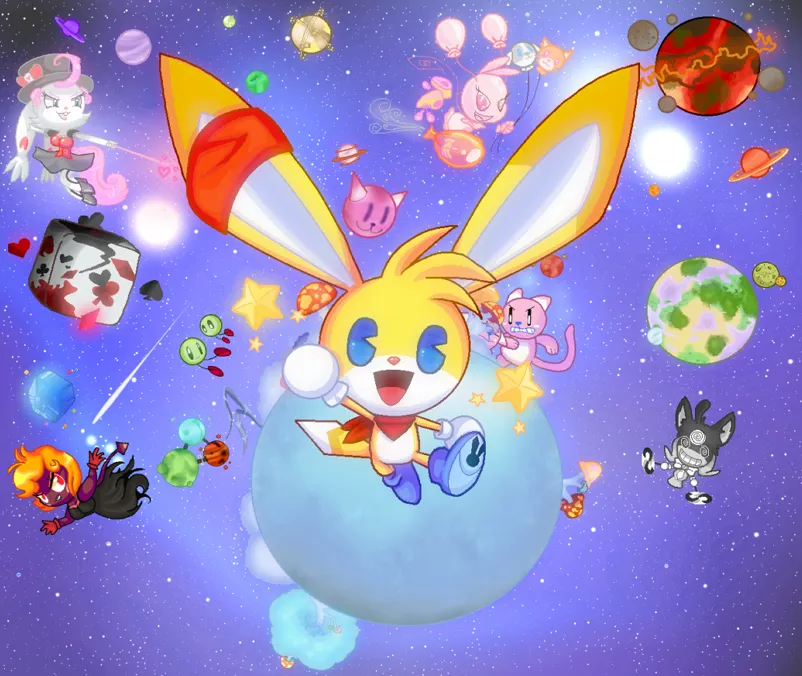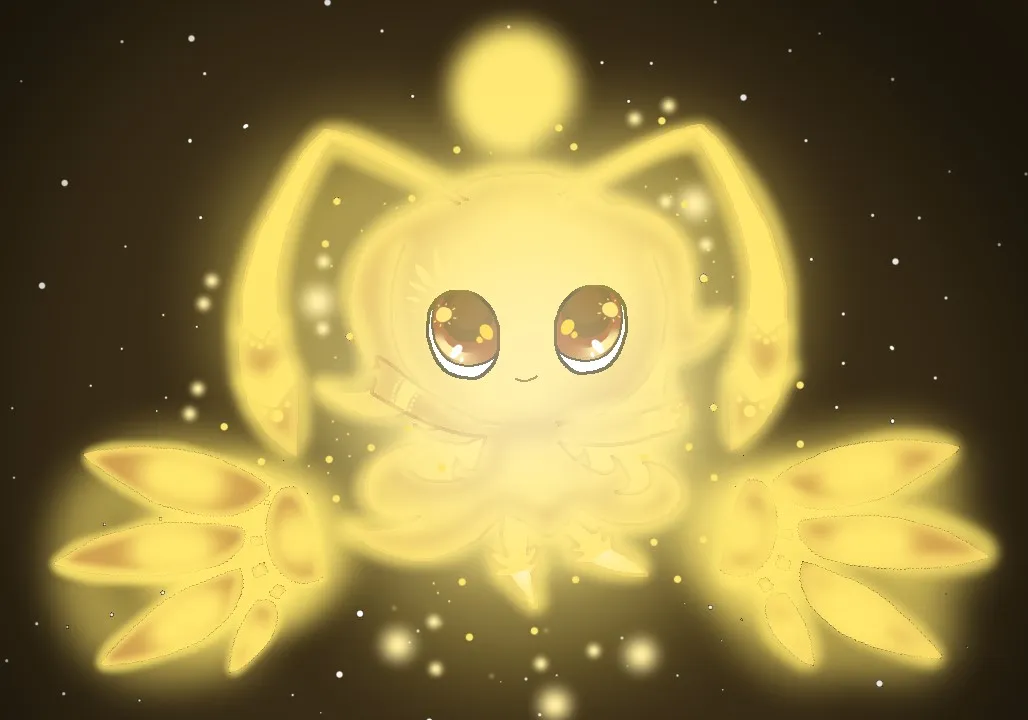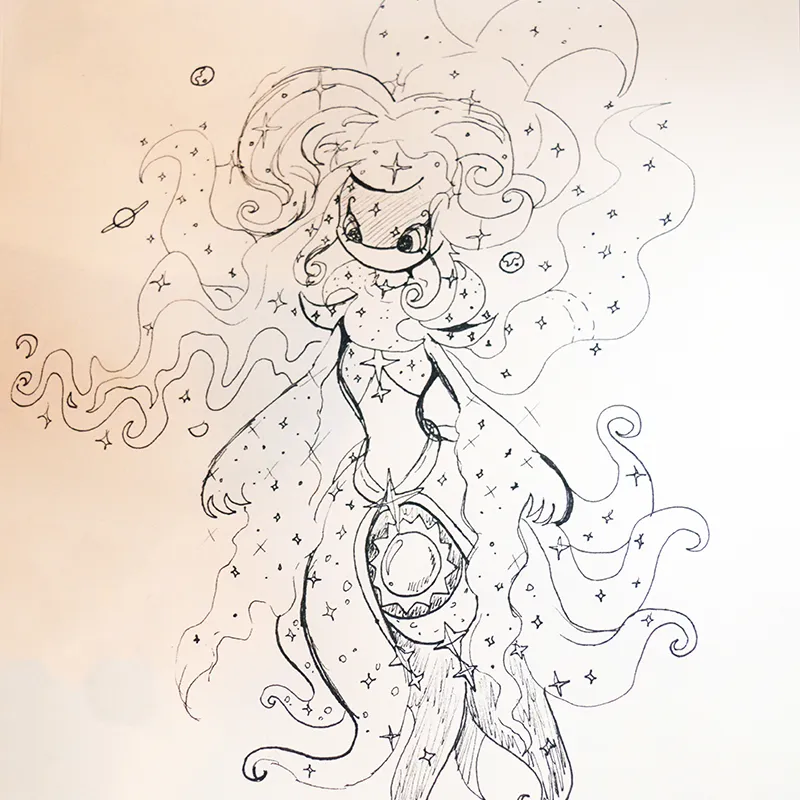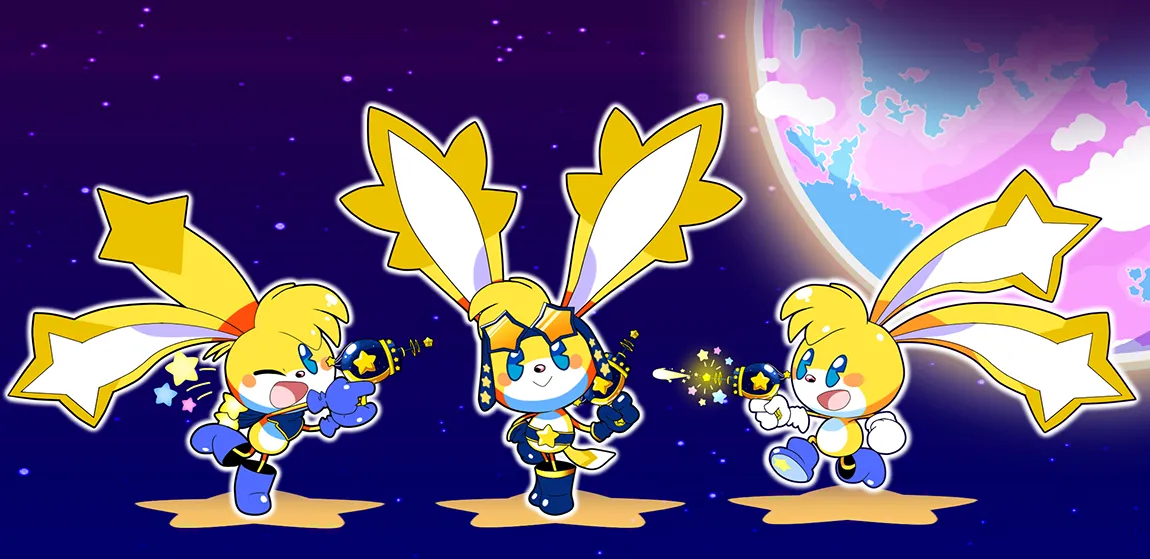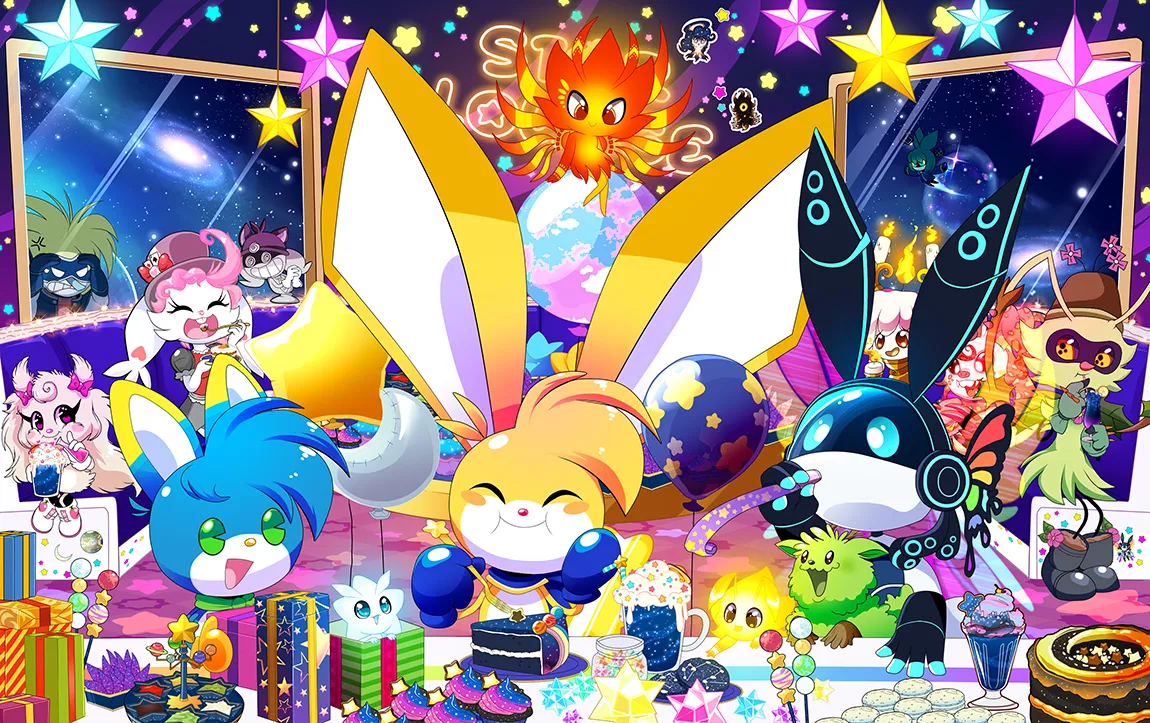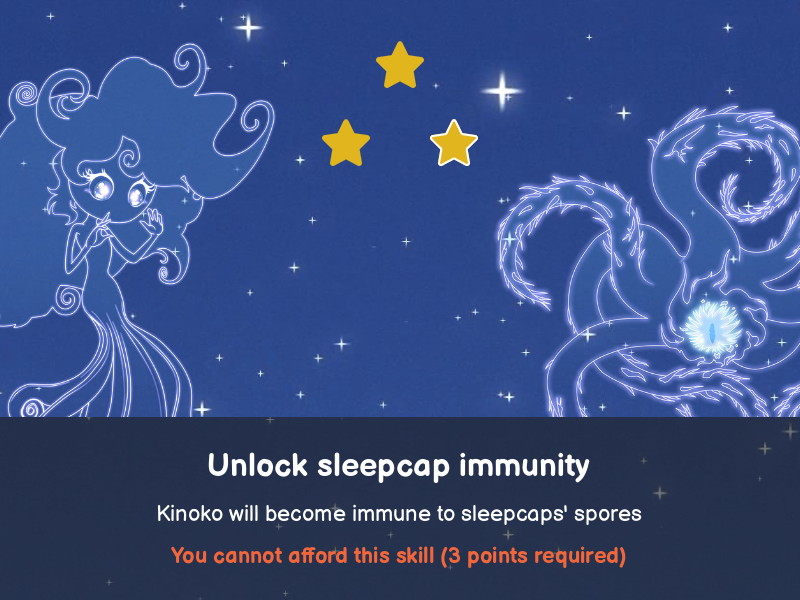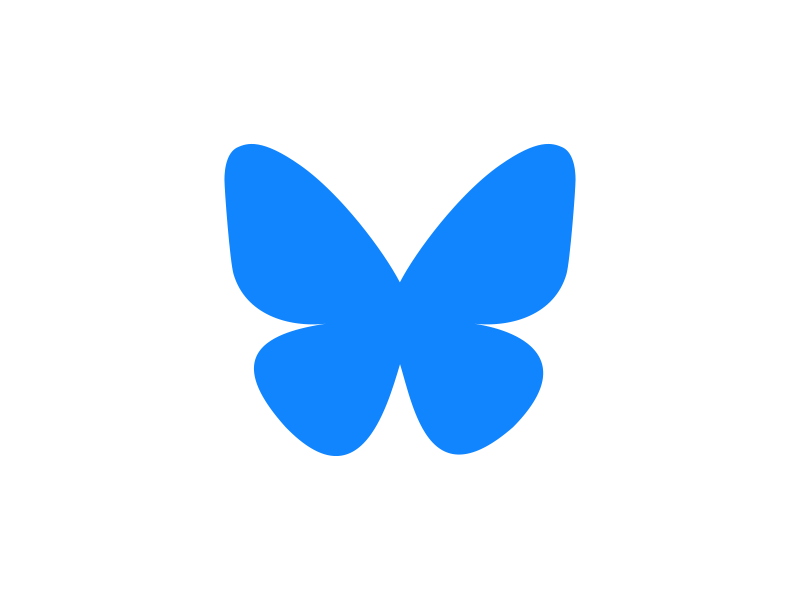Kinoko turns 12!
Published by James on 23/08/2023Today, August 23rd, is the day that Kinoko turns 12 years old!
We don’t mean that the character is only 12 of course. We mean that it’s been exactly 12 years today since Chelsey sat down at her PC and drew him for the first time. Although she didn’t think about it too hard at the time, that was the day that the Kinoko and the Cult of Galaxy project was born, and it’s why we’re here working on it together 12 whole years later, filling our website with over a decade’s worth of characters and lore and building Kinoko’s first ever video game.
In today’s special anniversary blog post, we’re looking back at the history of the Kinoko project from its humble beginnings as an in-universe video game, to the real-life video game we’re building today, to the multimedia franchise we’re trying to become. Sit tight, strap yourself in, and prepare to learn everything you need to know about how Kinoko came to be. Hopefully you’ll find it interesting!
Without further ado, let’s go right back to the beginning to the day Kinoko was born in 2011…
2011: Creating Kinoko
Right. Let’s get this bit out of the way, since it’s the one thing everyone always wants to know. What did Kinoko look like when he was first created 12 years ago? Well, here’s your answer, and if you think he looks like he used to be a rabbit, you’d be correct!
That’s right, Kinoko was a rabbit, and his name wasn’t Kinoko, it was Hoppers. Now that’s a name we try to avoid bringing up now, mostly because we just find it embarrassing, but in fairness these were early days, and Chelsey wasn’t the seasoned character creator back then that she is now! As you can see, his appearance was more rabbit-like back then, with bucked teeth, whiskers, and even a bushy tail. The Kinoko we know today isn’t a rabbit at all any more, of course, but he’s still compared to a rabbit often and he seems to attract a lot of rabbit fans, and, well, we suppose this is why.
Apart from those aforementioned details, which were quickly phased out over the next couple of years, Kinoko’s design back then isn’t a million miles away from what it is now. We’ll do a proper side-by-side comparison later, but you’ll likely recognise much of the modern-day Kinoko even in his first, 12 year old design!
But why was Kinoko created in the first place at all? That’s an interesting story…
As a child, Chelsey always had a fascination with cartoons and characters. I think that’s something a lot of people in this community we’re a part of can relate to. She created her first character – a raccoon named Rocky – at the age of nine, and over the next few years she created well over a hundred other characters for him to play and connect with. She enjoyed writing and drawing comics with Rocky and the other characters, and also creating simple cartoons to share with her friends online.
But Kinoko came about when Chelsey decided to create an in-universe video game for her characters to play. It was a console game starring that rabbit from outer space named Hoppers, and for a while Kinoko was just that – Hoppers, the video game character. Chelsey continued to work with her other characters for a while, but Kinoko began to pop up more and more in her drawings of them, and gradually she became more interested in him than she was in them!
Before long, Chelsey was spending more time drawing Hoppers than she was her other characters. He’d gained his first enemy in the form of the catties – fat, pink, cat-like creatures which came from a planet shaped like a fat, pink cat’s head. Hoppers’ own planet – which wouldn’t be named for several more years yet – became a world filled with mushrooms where the skies and oceans were pink and the grass blue. That planet would become the Fungaia we know today.
Kinoko’s design evolved a little bit during this time (we’re going back to calling him that now). As mentioned before, his rabbit-like features were gradually phased out - he lost the bucked teeth and the whiskers, his tail become longer, and his ears grew bigger and more pointed. His outfit changed, introducing blue boots instead of his original red ones, and an orange band which he wore wrapped around his ear. This is the design that Kinoko would retain – largely unchanged – for the next 11 years.
Rocky the raccoon remained Chelsey’s main character for another year after Kinoko’s creation, but fast-forward into 2013 and it was time for the next major milestone in Kinoko and the Cult of Galaxy’s evolution…
2013: Giving him a sidekick
By 2013, Kinoko was pretty much Chelsey’s primary focus. Although she wouldn’t have the means to actually go about making one for about another decade, she always dreamt of Kinoko starring in an actual real-life video game, jetting about space and beating up aliens. Growing up during a time when split-screen couch co-op with your siblings was still the norm, she soon realised that Kinoko needed a companion to serve as the ‘player two’ character – and, thus, Neemal was born!
Neemal – or Noodles, as he was in fact known back then – was the project’s second ever character, and he was originally designed as a simple Kinoko palette swap. I don’t necessarily know about today, but that was common in older multiplayer games. That’s exactly the same way that Luigi was created – as a palette swap for Mario, swapping red for green, before his design started to go off in its own direction. Well, Neemal’s first design was exactly that – Kinoko, but with the yellow swapped for blue, and the blue swapped for yellow.
But Neemal quickly developed his own personality, distinct from Kinoko’s, and his design was updated in several subtle ways to reflect that. Even though the pair would be best friends and go on space adventures together, Chelsey envisaged Neemal as anxious and fearful next to the bold and cheerful Kinoko.
What’s perhaps most interesting about these two characters, when placed side-by-side like this, is that their ears were the same length. Initially, there was never anything extraordinary about Kinoko’s ears at all. As we mentioned before, he was designed initially as a long-eared rabbit, and then even when he became a kuparkuke his ears remained long and Neemal’s ears were also long because – with no other reference besides Kinoko himself – that’s just how the fictional species looked at the time.
To this very day, Neemal remains Kinoko’s best and closest friend. They’re like brothers, alike in some ways and completely different in others, but joined at the hip all the same. Kinoko loves discovering things, meeting new alien species and exploring exciting new space technologies, and Neemal’s quite terrified of all of it. Even though we’ve developed and built on it in recent years, leaning more into Neemal’s unbreakable loyalty and bravery (when it really counts), it’s a dynamic that’s largely held true for more than a decade now. Whilst this is very much Kinoko’s project at its core, Kinoko wouldn’t be the same without Neemal at his back!
So, with Neemal now installed as Kinoko’s sidekick, the Kinoko and the Cult of Galaxy project had become two characters instead of one! But of course, with Rocky the raccoon and the hundred plus characters that came before, Chelsey already had a history for creating ridiculous numbers of characters, and so she wasn’t about to stop at two.
2013: More friends
With the creation of both Kinoko and Neemal, a new alien species had been form, and Chelsey was quick to follow this up with the addition of the first female kuparkuke. Those of you who know all about Kinoko’s friends already might have noticed that female kuparkukes have several physical differences to their male counterparts. Whilst males have pointed ears, females have rounded ears, and whilst males have thin tails, females have bushy tails. What’s interesting about Chelsey’s first drawings of a female kuparkuke is that these differences were there from the beginning.
Harpette was the first female kuparkuke, and a brand new friend for Kinoko and Neemal. For some reason she had wings in her very earliest drawings, but Chelsey quickly decided to detach these from her body and make them a part of her outfit instead – however, I’m told that she could indeed use them to fly! She was initially a cream colour with bright pink accenting, but she would later be redesigned to become pink with red accenting instead.
Now here’s where things get a little messy, story-wise. The next character Chelsey created, in March 2013, was actually Kinoko’s first villain – but, since I’m already well into the rhythm now of this almost episodic, chapter-based format I’ve got going on – let’s come back to her later and stick with the good guys for now.
The next two kuparkukes created – both drawn for the first time together on 26th March 2013 – were Cosmo and Hanton. These two male kuparkukes were also designed to be friends of Kinoko, Neemal and Harpette, but – like Kinoko and Neemal – they were always intended as two best friends and a package deal. Cosmo was a green kuparkuke and Hanton was red, and initially they shared the same body type as their friends, but eventually Cosmo would become taller and lankier, whilst Hanton would become wider and stockier.
Something you may not know about Cosmo and Hanton is that they were partially inspired by the characters of George and Lenny from John Steinbeck’s ‘Of Mice and Men’. The quick-witted Cosmo was intended as a sort of protector and ‘big brother’ for his best friend Hanton, who was envisaged as being slower and less clever than his friends, reliant on Cosmo to tell him what to do whilst also being the physically strongest of the group. This made the dynamic of their friendship different to the one shared by Kinoko and Neemal, and it’s still the way we portray their relationship now more than a decade later.
The next couple of characters were villains – and again, I’ll get back to them shortly, I promise! – but the next new friend created for Kinoko was actually… wait for it… Eve! If you’ve been following the development of our project closely, you might recognise Eve as the girl who’s completely, psychotically, head-over-heels obsessed with Kinoko. She in fact was created initially as the first non-kuparkuke friend for Kinoko’s little group, and she remained that way for a time.
Here she is alongside Kinoko and the others, before she became a villain!
Unfortunately for Eve, an actual girlfriend for Kinoko would later come along in the form of Kupette. Created in July 2013, a little bit later than the others, Kupette was actually intended as a proper legitimate love interest for Kinoko back then. Fans of Kinoko and the Cult of Galaxy will know of course that that’s no longer the case, with Kupette’s love now sadly unrequited, but the relationship between Kinoko and Kupette was a fixture for a good couple of years before the relationship between them was redeveloped into what it is now in 2016. To anyone who’s been attempting to ship Kinoko and Kupette – now you know!
With the creation of Kupette, Kinoko’s friendship group had by now become very colourful. There was Kinoko himself who was of course yellow. Neemal was blue. Harpette was cream. Cosmo and Hanton were green and red, and now there was Kupette who was this beige-looking orange colour (officially, she’s orange). The colours didn’t really mean anything at the time – I guess Chelsey just thought the variety looked pretty – but in 2014 she made the decision to do something with them.
That’s why, now, kuparkukes have coat colours indicative of their personalities. At one point their colour kind of completely defined their personalities, but we’ve gone back to that in recent years and decided that their colours shouldn’t define them so strictly. Now, a kuparkuke’s colour kind of hints at a certain key aspect of its personality, but there’s still lots of room for individuality and personal characteristics.
And so, with these first six kuparkukes and also Eve (who, again, would be later redeveloped into a villain), Kinoko had a fair number of friends – but by this point, he’d also begun to acquire a growing collection of enemies, too. After all, what is a video game hero without some rogues to battle?!
2013–14: Enemies
Still with her ambition of putting Kinoko into a video game firmly in her mind, Chelsey set about creating lots of enemies and villains for Kinoko throughout 2013 and 2014. If you don’t count the catties (which, as characters, we don’t, because they were generic mobs, and the first one of them we actually named didn’t come along until many years later), Kinoko had all these friends, but he still needed some villains to fight!
Earlier in this post, I mentioned that Chelsey created Kinoko’s first ever villain after Harpette but before Cosmo and Hanton, making that villain the project’s fourth ever character. She isn’t a character we’ve talked about a whole lot, but she still exists, and we still have plans for using her even if she isn’t directly involved in the machinations of either of the villainous cults that control the Milky Way Galaxy. She started life as a devil-inspired character, and she was just the first of many characters that would come along to make Kinoko’s life in space difficult. Velester would later go on to be reimagined as a kind of magma-dwelling mermaid.
Following on from Velester, who was created in March 2013, Chelsey then created Balloonatic and Magica in April, Eve in May (though, again, she was originally a friend of Kinoko!), Hypnotiser in June, Mr Evil in August, then then finally Alizastar in December, nicely rounding out the year of 2013 with Kinoko’s first batch of enemies. These are Kinoko’s oldest villains, and it’s interesting to me how little any of them have in common. I guess this was at a time when Chelsey was still throwing random ideas together – after all, this was a space project, so she could do whatever she liked!
2014 saw the addition of three new villains – Bostrong, the bounty hunter, and Checkers and Draughts, a pair of lovers and criminals who explore the galaxy in search of treasures to steal. Their names are obviously based on two alternative names of the game that we, in the United Kingdom, would call ‘draughts’ and which, in US English, is called ‘checkers’. There’s no real reason behind that decision, and to make things even weirder the name of Draughts the character is actually pronounced as ‘drawtz’, and not as ‘drafts’ like the game. If we created them today we might’ve named them something else, but sometimes names just stick, so we don’t have any plans to rename them.
With nearly every new villain came another new planet, or at least a vague idea for one. No matter what he ended up doing once he got there, the primary drive behind Kinoko’s adventure was always going to be space exploration, and so it was always important to create lots of planets and species as well as new characters. By the end of 2014, with all these new characters for Kinoko to fight, there were quite a lot of planets for Kinoko to visit too!
Thankfully, other new developments throughout 2014 meant that Kinoko wouldn’t necessarily be fighting these new galactic threats alone, because that year also saw the creation of several new alien allies for Kinoko. Most notably, these new allies included Grasgro, Gugyle and Tuckie, the freedom fighters from the planet Eophrelush. These new creations also included the starsprites – and it was their creation that would lead directly into the next major turning point for the Kinoko and the Cult of Galaxy project…
2014–15: Building a universe
When I was listing out the villains that Chelsey created throughout 2013 and 2014 just now, I deliberately omitted one. True to character, one of the villains created during this time period would lurk in the void, unseen, for many years before finally revealing himself just last year. That villain was Blackhole, the universe’s ultimate ‘big bad’. The truth was that Chelsey could never quite get a handle on the way such a character should look, and so she kept on putting it off for another day – nevertheless, whilst all those other villains existed to serve as Kinoko’s ‘baddie of the week’, Blackhole was always intended to be the ultimate villain.
Blackhole was little more than a concept when he was created in 2013, and for three years he remained that way – but with his creation, the seeds had been sown for what would eventually become the whole framework of the Kinoko and the Cult of Galaxy story.
Every time Chelsey created a new villain, the universe around Kinoko grew darker – suddenly this happy kuparkuke would find himself in a galaxy full of all manner of problematic types, such as thieves, bounty hunters, evil space gangsters, fanatical zealots and more. The creation of the starsprites – tiny, glowing fairy-like creatures inspired by stars – introduced some light back into the galaxy, and would influence the aesthetic of the project going forward into the future.
The creation of the starsprites must’ve got Chelsey thinking about the more ‘cosmological’ side of things, because soon after their creation she got to thinking about who actually created this whole universe in the first place. Galaxy was the result – a divine creator-goddess who created the universe before somehow disappearing. During the time at which Kinoko makes it into space, this creator-goddess would already be long-gone from the world. Kinoko would never meet his creator.
Unlike Blackhole, whom Chelsey allowed to sit in the back of her mind unseen for so many years, Galaxy was always going to play a much bigger part in the whole ‘presentation’ of the project. Whilst Kinoko is the project’s protagonist, Chelsey has often said that it’s Galaxy who she sees as the character most central to everything. Without Galaxy, there would be no universe, and it’s Galaxy who the plot revolves around, even if she’s not physically around to experience it herself. The starsprites – Galaxy’s angels – fill in for her, still intent on carrying out the divine will of their creator, and so in many ways Galaxy’s presence is still felt around the universe.
Galaxy’s design has seen many incarnations throughout the years, since her creation in 2014, but she’s always been based on the visual appearance of a galaxy in space as it might be viewed through a telescope – a milky swirl on a twinkling backdrop of stars. That’s what Galaxy looks like. Her design’s shifted and changed here and there, and her design wouldn’t be completely finalised until 2022, but that’s only because Chelsey wanted it to be perfect.
More characters would be created throughout 2015, the year that followed, and by the end of that year all the pieces were in place for Chelsey to create something really quite special. What I’m afraid she didn’t bank on back then was having to deal with the arrival of… well, me!
2016–22: Developing the project
I know it probably feels a bit late, us being more than 3,000 words into this blog post already, but let me introduce myself! I’m James. Today, I’m the co-creator of Kinoko and the Cult of Galaxy – primarily, I’m the developer who works on both our website and our game – but there was a period back in early 2016, back when I first met Chelsey, when I myself was just discovering Kinoko for the first time. It’s been a while now – seven and a half years in fact – but I still remember my first brush with Kinoko and the Cult of Galaxy clearly.
Look, I’m not going to beat around the bush here. I liked Chelsey. I’m crazy about her, and when you’re really into someone you’re just getting to know it’s natural to want to know everything about them. You want to know if you’re compatible with them. You want to know what they’re into. You want to know what their plans are for the future. And so on and so forth. I knew that Chelsey was an artist. I’d seen her work before, so I knew she had talent, but back then she used to be quite secretive about her most personal works, so she unfortunately wasn’t as comfortable in those days sharing what she could do.
I’d heard about Chelsey’s mythical sketchbook, and I yearned to see it for the longest time. I already knew what she could do when she was drawing for other people, but I wanted to see what she liked to draw. The day I finally got to see what I’d been pining for, I was… can I say mesmerised? Because I was mesmerised.
In between the days that I got to physically see Chelsey, which were the main thing I lived for at that point in my life, we used to chat over Skype about her works and one-by-one she’d gradually introduce me to more of her characters. I came to know the kuparkukes first – I can remember her testing me to see how well I remembered their names (perfect marks by the way!) – and then I got to know the villains, and then lastly I got to know about Galaxy and Blackhole, the divine entities at the head of it all. I could see that she had all these interesting pieces to work with, but Chelsey explained to me that she didn’t really know how she was going to make a story out of them.
On June 11th 2016, I pulled up my keyboard, had a nice long chat with Chelsey about all the ideas she had in mind for these divine beings, and I officially made my first contribution to the project: the long-forgotten origin of Galaxy and Blackhole.
At around the same time, Chelsey told me that I could ‘co-own’ one of her lesser characters – Floatie the dolphin, an obsession of mine at the time – but I knew she was just testing the waters to see if she could entrust me with her beloved creation. She could. From that moment on, the rest, quite honestly, is history. For the next few years, we would work together to turn all these floating ideas into a cohesive story with a beginning, middle and end. I had simply the best time, coming up with villains to write stories about which Chelsey would then go off and illustrate, always making them look a thousand times better than they ever looked in my head as I wrote.
We went through many iterations of the story before finally settling on anything permanently. We needed to get the right balance between Kinoko and Galaxy, since the story needed to be about them in equal parts, but one of them no longer physically exists. At the same time, Blackhole isn’t so much a character as much as an unstoppable, interdimensional threat which cannot be stopped by any means that mortals possess… so that was a challenge too. How could we tell a story through the lens of a humble, mortal kuparkuke from the planet Fungaia about gods and monsters he’d never be able to physically face?
It took us a while to get there, but we finally came to a decision – we would introduce two new cults, one to follow Galaxy, and the other to follow Blackhole. These two opposing cults – which we decided would be so powerful and influential that they would, between them, have almost the entire Milky Way Galaxy in their grip – would bring about the creation of many new characters, cultists who would serve as Galaxy and Blackhole’s mortal representatives, and major new enemies for Kinoko to battle. Before long, we had new galactic threats to play with, such as Kokytos, Necronyx, Vacio and more.
As far as we were concerned, the Kinoko and the Cult of Galaxy project had never been in a better place. We had a story. We had compelling heroes and villains. We had a cataclysmic threat for the good guys to overcome or die trying. There was just one more thing we had to fix before we could feel ready to start putting our work out into the world…
2022: A new Kinoko
The years between 2016 and 2022 were not always easy for us in terms of our personal lives. We were living independently together for the first time with little money to our names, and as much as we wanted to produce something ‘real’, we were always forced to juggle our ambitions with paying rent and other real-life responsibilities. I was still only at the beginning of my career, and Chelsey was unable to contribute because she was a student studying art and animation. I’ve already talked about exactly what we got up to during these years, but what we really wanted to be doing was making our game.
2022 marked a number of significant changes in our lives that made making our game finally feel possible. I talked about some of them in our first ever blog post here. We moved to a place where we both feel happier, and gained an office space in the process. Chelsey completed her qualifications, and was free to start her own career in art. She was able to pick up more commissions, putting aside more money for Kinoko, and was able to dedicate more time to the project than ever before. With less financial pressures than we’d had in years past, I was able to start teaching myself Unity development, and we were finally able to start working on the game we’d always wanted to make.
We were older, maturer, more financially stable, and more experienced. We were ready to go. The one final obstacle that stood in our way was Kinoko himself.
With all the changes that the project had undergone between 2016 and 2022, Kinoko himself no longer felt like he belonged. We found his personality quite dull and uninteresting compared to other, newer characters, and Chelsey had grown tired of the way he looked. It’s never a good sign when you’re spending far more time drawing your side-characters than your protagonist, but that’s exactly what she was doing. It didn’t help that his name was still ‘Hoppers’ throughout most of this time period too, and we’d long-since grown sick of that. Chelsey had the brainwave of calling him Kinoko instead, after years of struggling for a name, but that alone didn’t fix him.
Chelsey adapted her art style slightly – it’d evolved so much over the years that it felt like the perfect time to refresh the project’s visual identity anyway – and started to redesign Kinoko. It’s not easy redesigning a character you’ve worked with for eleven years, but she was determined to try. She settled on a bluer colour scheme quite quickly, and she even considered changing the shape of his ears for a while!
It took a while, and many drawings, but Chelsey kept going back to the drawing board, trying out different things and different types of clothing and accessories, until finally she landed on a design that she loved, and I loved too – that of the Kinoko whom we all know today. It’d taken more than eleven years of development to get there, but finally we had a protagonist who matched the new direction we were going in and who we were completely, 100% happy with.
Other changes would be made to improve Kinoko’s characterisation, and we effectively ‘tested these out’ on Twitter. Whilst I started building the prototype for our game, Chelsey got into a habit of drawing whatever Kinoko artwork came to mind, sharing it with our growing number of followers, and gauging the reaction. Before long, Kinoko had become a foodie, regularly seen sipping on massive milkshakes and gorging on all the snacks that outer space had to offer. The Star Lounge – Kinoko’s favourite café – became a regular fixture, and the starsprites (who were also set to become a key component of our game) became recurring companions.
All-in-all this was a really exciting time for Kinoko which made him the character he is today.
And so, with the new-and-improved Kinoko finally and firmly established, there was finally absolutely nothing left standing in the way of us cracking on with our first ever video game, something we’d been planning and dreaming about doing for (at least in Chelsey’s case) more than eleven years. We launched our new website, rebranded ourselves, and the rest is history!
2023 and beyond: Making a game
And that, of course, brings us up to the present day, so if you’ve been following our journey since our website and social media relaunch then you already know the rest! We started work on our Kinoko and the Cult of Galaxy game in around October of last year, and we’ve been working on it daily since the first of January, posting updates as often as we can. We’ve got a long journey ahead of us, but we’ve been blessed with an excellent and supportive community who seem to be just as excited about our game as we are.
There’s no way of saying at the moment how long our game will take to develop, but we’re hard at work on the Fungaia stage of the game, which will serve as the game’s demo and, potentially, a pitch. We don’t know at the moment whether we’re going to seek a publisher or attempt to self-publish or what, but once we’ve got a demo in hand we’ll be able to assess our options and figure out what’s best for Kinoko. Developing our demo will remain our primary goal for the remainder of this year and well into 2024.
If you’ve made it this far and you’re still reading, seriously, thank you. Since our new website only launched last year, I’ve always felt like we’ve been missing so much of our history, so it’s been a goal of mine for a while to get everything down in writing. It’s been a very long write-up (it’s taken me three days to get through it all), but I’ve had a lot of fun digging through old artwork with Chelsey, quizzing her on the origins of the project, and reminiscing about my own discovery of it.
Thank you, and here’s to another 12 years of Kinoko!


